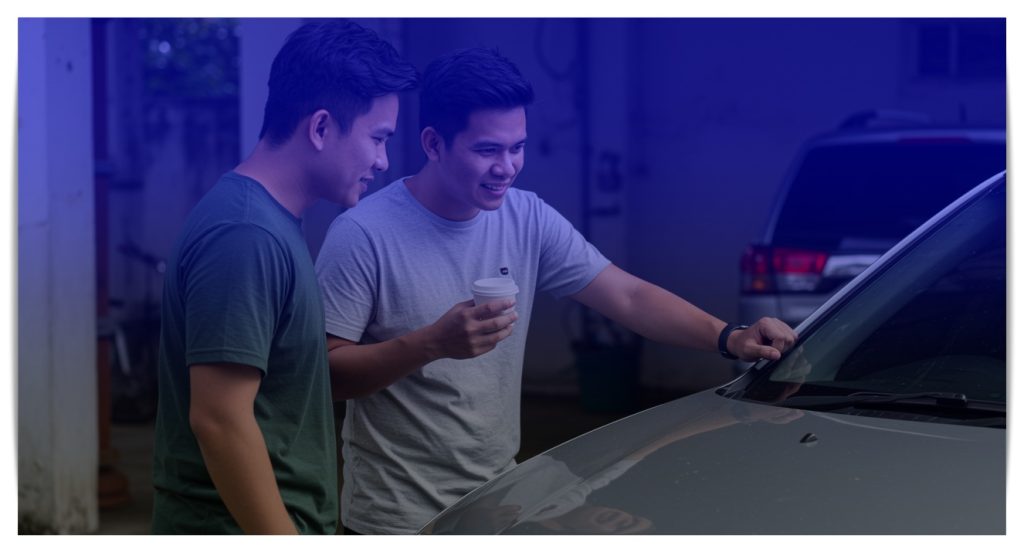Buying a used car can be exciting, especially if it means saving money or finally upgrading from public transport.
But it also comes with risks—especially if you don’t know what to check.
Everyday drivers, first-time buyers, and families looking for budget-friendly options can benefit from this information.
And while there’s no official cost to doing your own car check, making a mistake can cost you a lot later.

1. Start Smart: Research Before You Meet the Seller
Before you even go see a car, do your homework.
Look up the make and model online.
Compare listings on different sites to find the average price.
Check if the car is known for any recurring issues—some models have common engine or aircon problems.
This way, you’ll spot if a price is too good to be true.
Always ask why they’re selling it.
If the answer sounds vague or forced, that’s a sign to pause.
2. Inspect with Open Eyes, Not Just Hope
When you finally see the car, your eyes are your first line of defense.
Walk around it slowly.
Check for dents, scratches, and rust.
Run your fingers along the body to feel for uneven paint that might hide past repairs.
Look at the tires too—uneven wear could mean alignment problems.
Open the doors and take a good look inside.
Check the seats for tears, the floor mats for water stains, and the dashboard for warning lights.
Test every button: windows, lights, wipers, radio, aircon.
If something doesn’t work, that’s a clue about how the car was treated.
3. What’s Under the Hood Tells the Truth
This part might feel technical, but it’s where many problems hide.
Pop the hood and check for oil leaks, loose belts, or cracked hoses.
Look at the battery—does it have white buildup around the terminals?
That means it might be old.
Pull out the oil dipstick.
If the oil is thick and black, the car might have been neglected.
The best move here is to bring a mechanic with you.
They can check the engine and undercarriage properly.
A small inspection fee is nothing compared to the cost of repairs later.
4. Mileage: The Story in Numbers
The odometer shows you how far the car has been.
Most cars in good shape have around 10,000 to 15,000 km per year.
If you see a car that’s over 60,000 km, that’s not always bad—but it should have a clean service record.
No records? Walk away.
Also, watch for signs of tampering.
Numbers that don’t line up evenly, or a clean steering wheel in a “low mileage” car, could be red flags.
5. Papers Speak Louder Than Promises
Never believe a seller who says, “I’ll give you the documents after the sale.”
Ask to see the Certificate of Registration (CR) and Official Receipt (OR) right away.
Check the name—does it match the person selling it?
If not, they should have an authorization letter from the real owner.
Use the plate number to check the vehicle’s history through the LTO.
See if it has any unsettled violations or if it’s reported as stolen.
Also, double-check the engine and chassis numbers to make sure they match what’s on paper.
6. The Test Drive: Your Make-or-Break Moment
This is the part many people skip—but shouldn’t.
Ask to test drive the car in different conditions: slow traffic, open roads, slight inclines.
Listen for weird sounds when turning or braking.
See how the gear shifts, how the brakes respond, and if the aircon cools fast enough.
Trust your gut.
If something feels off, there’s a reason.
READ ALSO: Everything You Need to Know About the Philippine Lemon Law
Common Traps to Avoid
A shiny exterior doesn’t mean it’s a good buy.
Some cars get a quick paint job to hide bigger problems.
Never skip the test drive just because you’re in a rush.
And don’t go alone if you’re not confident.
Bring someone who knows cars or a trusted mechanic.
Ask for the service records.
If they say they lost them, ask if you can verify maintenance at their usual shop.
If they dodge the question, that’s your answer.
Last, always negotiate.
Point out any issues you find.
Even a worn-out tire can be a reason to lower the price.
Final Checklist Before You Decide
By now, you’ve done the research.
You’ve inspected, test driven, and checked the papers.
Before handing over any money, ask yourself:
- Did the car feel safe to drive?
- Were the documents clean and complete?
- Did the seller seem honest and open?
If you feel confident in all three, you’re on the right track.
If not, remember—there are always more cars.
Better to walk away than live with a mistake.
Frequently Asked Questions
1. Can I transfer ownership even if the seller’s name is not on the CR?
Only if the seller has a notarized Deed of Sale and an Authorization Letter from the registered owner.
2. How can I verify if a car is stolen?
You can check through the LTO’s online system or request a Certificate of No Apprehension.
3. Is it safe to buy repossessed vehicles?
Yes, but treat them like any other used car. Inspect thoroughly and check the papers.
4. What’s better: buying from a dealer or a private seller?
Dealers offer more security, but private sellers may offer lower prices. Both have pros and cons—just stay sharp with checks.
Conclusion
Buying a used car doesn’t have to feel like a gamble.
With the right steps and a careful eye, you can drive off feeling good about your choice. Take your time, ask questions, and remember: a good car will wait, but a bad one will rush you.